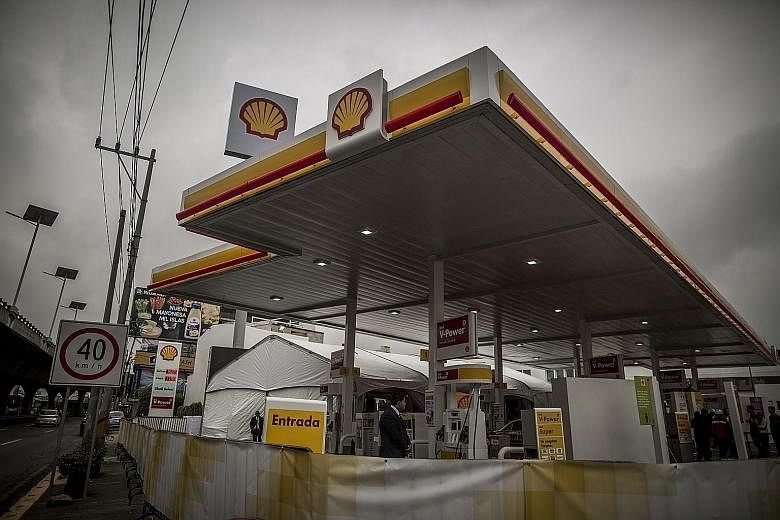LONDON • Royal Dutch Shell cancelled an austerity dividend policy yesterday as the oil and gas company boosted its cash generation forecasts, drawing a line under three years of oil price turmoil.
The Anglo-Dutch company said it will abolish its scrip dividend, through which investors can opt to receive dividends in shares or cash, in the fourth quarter of this year. The scrip dividend scheme was introduced in early 2015 after oil prices fell by more than half from over US$100 a barrel.
With lower debt, oil prices above US$60 a barrel and progress in asset sales, pressure has mounted on Shell to deliver on commitments made in 2015 to remove the scrip and launch a share buyback programme.
Shell's dividend payouts in the 12 months to September amounted to US$15 billion (S$20.2 billion), with scrip accounting for around a quarter of the total.
In a strategy update, the company reiterated its plans to buy back US$25 billion worth of shares between this year and 2020 in order to offset the dilutive effect of the scrip and its US$54 billion acquisition of BG Group. Shell did not specify a time to start the programme.
It also raised its cash-flow outlook to US$30 billion from US$25 billion by 2020, assuming an oil price of US$60 a barrel.
Shell sharply increased revenue from its operations thanks to deep cost cuts, thousands of layoffs and asset sales. Over the past five quarters, it has adapted its operations to make profit at oil prices of US$50 a barrel, generating sufficient cash to cover its dividend payouts.
"We have also made significant progress with our divestment programme, allowing us to reduce net debt in that time," chief executive officer Ben van Beurden said in a statement.
BP pipped its rivals when announcing last month that it would resume share buybacks in the fourth quarter in order to offset the dilutive effect of the scrip dividend. Statoil also eliminated its scrip dividend.
Shell said that its vast US$30 billion asset disposal programme, aimed at reducing debt following the acquisition of BG Group, was nearly complete one year ahead of target, with US$23 billion completed, US$2 billion announced and another US$5 billion at an advanced stage of progress.
The company will continue divestments at a rate of US$5 billion per year once the target is reached until at least 2020, it said. The assets included a portfolio of oilfields sold to Chrysaor which amounted to half of Shell's production in the North Sea, a retreat from Canada's oil sands and a number of refinery sales.
As a result of the divestments and cost savings, the company's target of reducing its debt-to-equity ratio to 20 per cent was "in sight".
It stood at 25.4 per cent at the end of September.
Shell maintained its capital expenditure forecasts at US$25 billion to US$30 billion per year until the end of the decade.
REUTERS

